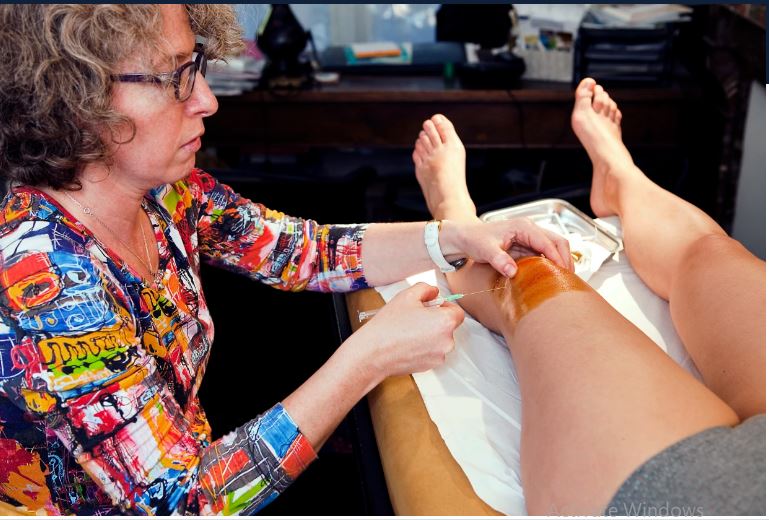Congressman Donald McEachin of Virginia passes away at 61
First elected to Congress in 2016, McEachin was a Democrat who served...

A common joint pain treatment may hasten the advancement of arthritis.
According to new research, corticosteroid injections, one of the most popular therapies for arthritic pain alleviation, may potentially hasten the disease’s progression.
The most common type of arthritis, osteoarthritis, develops as the cartilage that cushions a joint wears off over time, resulting in pain and stiffness. The illness, which most frequently impacts the hands, hips, and knees, affects more than 32 million adult Americans. Although there is no cure, corticosteroid injections can occasionally ease the agony. Injections of hyaluronic acid are also used, but insurance coverage for them is less common.
Two small unpublished studies that will be presented on Tuesday at the annual conference of the Radiological Society of North America revealed that, on average, patients who had corticosteroid injections saw their knee arthritis progress more swiftly than those who did not. In contrast, hyaluronic acid injections were linked to a slower rate of illness development when compared to a control group.
Our investigations demonstrate the need for greater awareness of the potential link between corticosteroids and osteoarthritis (OA), according to Azad Darbandi, a medical student at the Chicago Medical School and co-author of one of the research.
The Osteoarthritis Initiative, an extensive observational research effort including close to 5,000 adults with knee osteoarthritis, was the subject of both studies, which evaluated participants. In Darbandi’s study, X-rays from 50 patients who had corticosteroid injections, 50 who received hyaluronic acid, and another 50 who served as controls were examined. The people who received corticosteroid injections had worse arthritis progression than the other two groups, according to the scans, which were gathered annually for four years.
The University of California, San Francisco’s second study looked at the MRI scans of 210 patients, 44 of whom had corticosteroid injections, and 26 of whom had hyaluronic acid.
By the two-year follow-up point, the steroid-taking group had more severe cartilage deterioration, according to scans that were taken at the time of the injections as well as two years before and after.
The study’s co-author, Dr. Upasana Bharadwaj, a postdoctoral researcher in the department of radiology and biomedical imaging at UCSF, said, “Knowing that helps patients make a better informed choice about whether they want an injection and, if they do, which injection they might prefer.
But there is conflicting prior study on this topic. According to a 2019 study, corticosteroid injections in the knees and hips could worsen the condition and perhaps prompt the need for joint replacement surgery. However, a study conducted last year discovered a parallel course of arthritis in those who received hyaluronic acid and those who received steroids.
Rheumatologist Dr. Jonathan Samuels at NYU Langone Health said it’s challenging to establish causation in studies like the two recent ones since numerous things might affect the development of arthritis and no two individuals are alike.
“We lack the biological evidence to demonstrate that the injection itself is speeding up damage. With this preliminary evidence, it’s challenging to link the dots between injection and injury, he said. But given that getting steroid injections is such a popular practise, it’s a crucial question.
Before speculating on any causal relationships, Dr. Jason Kim, vice president of osteoarthritis research programmes at the Arthritis Foundation, stated that he would prefer to see studies with “far greater sample sizes over a longer period of time.”
Peer reviews for their research as well as additional research are required, Bharadwaj and Darbandi concurred.
The idea that persons who received steroid injections were just more inclined to partake in activities that accelerated the advancement of their arthritis later on was taken into account by Bharadwaj’s team, who stated that they had made an effort to do so. They chose participants for this study whose levels of exercise had been consistent during the course of the research.
Along with the results, Darbandi provided a few cautions. One of them, he claimed, is that the outcomes don’t always reflect the severity of the symptoms that patients reported. A patient may not necessarily experience more pain only because imaging reveals more arthritic development.
Second, he added, the findings shouldn’t prompt people to always forego corticosteroid injections.
They are useful in the short term for putting a Band-Aid on the pain, so even though they could exacerbate osteoarthritis, Darbandi said, “that doesn’t imply there’s no beneficial aspect to it or that they shouldn’t be utilised.”
Injections of hyaluronic acid or corticosteroids are not advised for arthritis sufferers, according to Kim’s organization. Better therapeutic alternatives are ultimately required, according to him, so that scientists won’t have to “compare one imperfect agent to another.”
Catch all the Business News, Breaking News Event and Latest News Updates on The BOL News
Download The BOL News App to get the Daily News Update & Live News.